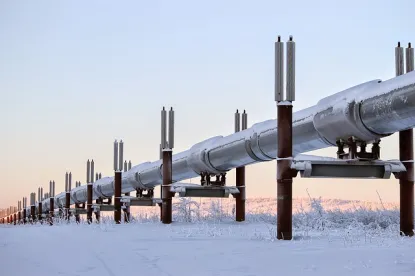The Keystone XL Pipeline is back in the spotlight. In the first quarter of 2019, the U.S. District Court for the District of Montana and the U.S. Court of Appeals for the Ninth Circuit upheld the injunction prohibiting TransCanada Keystone Pipeline, LP and TransCanada Corporation (TransCanada) from beginning construction on the Keystone XL Pipeline. On March 29th, President Donald Trump issued a new cross-border permit that threatens to bypass the pending litigation. Most recently, on April 8th, the United States and TransCanada filed motions to dismiss the Ninth Circuit appeal and remand to the district court with instructions to dismiss for mootness.
These filings represent the most recent steps in a decade-long fight over this controversial pipeline.
The Keystone XL Pipeline
The Keystone XL Pipeline is the planned fourth phase of the Keystone Pipeline System, an oil pipeline system in Canada and the United States, which was commissioned in 2010. Phases 1-3 have already been completed and are online. The first phase went online in 2010, and the most recent phase (the Houston Lateral Pipeline) went online in 2017.
The fourth phase, the Keystone XL, is the only remaining phase of the Keystone Pipeline System. To date, no construction has begun in the project right-of-way. The stalled construction of this phase is a result of the controversy surrounding the project, which is largely related to the project route crossing the Sandhills in Nebraska.
In November 2015, the Obama State Department rejected the Keystone XL Pipeline by refusing to issue a cross-border permit to TransCanada. A cross-border permit is required for this project because the pipeline crosses an international border.
The First Cross-Border Permit and Ensuing Litigation
In March 2017, however, the Trump State Department approved and issued a cross-border permit to TransCanada.
Judge Morris for the District of Montana vacated the Trump Administration’s cross-border permit on November 8, 2018. In its order, Judge Morris also enjoined TransCanada from “engaging in any activity in furtherance of the construction of operation of Keystone and related facilities” until the Department of State completes a supplemental environmental impact statement that complies with the National Environmental Policy Act and the Administrative Procedure Act.
In February 2019, Judge Morris then granted in part and denied in part TransCanada’s motion to stay pending appeal to the Ninth Circuit. In the order, the court permits TransCanada to proceed with certain “off-right-of-way activities,” such as transportation of pipe and preparation of pipe storage and ware yards on privately owned property. The court, however, determined that the remainder of the November 2018 Order enjoining TransCanada from construction activities would remain in effect.
On March 15, 2019, a two-judge panel for the Ninth Circuit denied TransCanada’s motion for a stay pending its appeal of the district court’s order on the grounds that “TransCanada has not made the requisite strong showing that they are likely to prevail on the merits.” Accordingly, TransCanada could not move forward with construction activities in the right-of-way until resolution of its appeal. TransCanada estimated that, as a result of the delay, it would not generate approximately 6,600 U.S. construction jobs, $2 billion in U.S. contractor awards and wages, and $460 million in payments to local utilities and taxes in 2019. TransCanada further estimated that it would lose approximately $949 million in earnings from the delay.
President Trump’s March 2019 Presidential Permit
Only two weeks after the Ninth Circuit’s decision, however, President Donald Trump issued a new cross-border permit for the Keystone XL Pipeline. In the new permit, President Trump “grant[s] permission . . . to TransCanada . . . to construct, operate, and maintain pipeline facilities at the international border of the United States and Canada.” Importantly, he states that “[t]his permit supersedes the Presidential permit issued to the permittee, dated March 23, 2017. For the avoidance of doubt, I hereby revoke that March 23, 2017 permit.”
April 8th Motions to Dismiss the Ninth Circuit Appeal
Less than two weeks after the issuance of the new presidential permit, the United States and TransCanada filed separate motions to dismiss the Ninth Circuit appeal and remand to the district court with instructions to dismiss for mootness.
In its motion, the United States argues that “[t]here is no live ‘case or controversy’ surrounding the 2017 permit anymore” because “the 2017 permit was revoked and superseded by a new permit that was issued by the President on March 29, 2019.” TransCanada agrees, arguing in its motion that the claims underlying the district court case “all challenged the validity of a permit that no longer exists.”
The Ninth Circuit has not yet issued an opinion on these motions. Nevertheless, on April 5th, the Indigenous Environmental Network and the North Coast Rivers Alliance filed a new case in the District of Montana arguing that the second presidential permit is invalid and seeking injunctive relief with respect to that permit.



 />i
/>i

